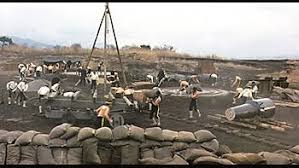The Kayah People: A Deep Dive into Their Culture and Heritage

Introduction: The Significance of Kayah Heritage
The Kayah people, also known as the Kayah or Kariang, are one of the many ethnic groups in Myanmar, distinguished by their unique cultural heritage, traditional attire, and customs. In recent years, there has been a growing interest in the Kayah community as questions regarding ethnic identity and the importance of preserving cultural diversity come to the forefront. Understanding the Kayah’s history and current situation provides insight into the broader narrative of ethnic relations in Myanmar, especially amid ongoing conflicts and political changes.
The Origins and Culture of the Kayah
The Kayah state, located in the eastern part of Myanmar, is the native homeland of the Kayah people. Historically, they have a rich tapestry woven from their animistic beliefs and influences from Buddhism and Christianity, leading to a diverse culture. The Kayah are known for their craftsmanship, especially in weaving, with intricate designs that often hold significant meanings.
One of the most notable elements of Kayah culture is their traditional dress, especially the colourful clothing worn by the women, which is often adorned with silver ornaments. Festivals, such as the Kayah New Year, highlight their vibrant cultural practices, where traditional music, dance, and rituals are celebrated.
Current Status and Challenges
In recent years, the Kayah state has faced numerous challenges, including political instability and conflict arising from the military rule that has affected many ethnic groups across Myanmar. These tensions have led to a humanitarian crisis, with many Kayah people being displaced and in need of aid. International organisations and local NGOs have been striving to provide relief and aid, but access remains limited due to ongoing hostilities.
Efforts to preserve the Kayah culture amidst these challenges are critical. Various organisations and community leaders are advocating for the protection of their rights and for the promotion of their cultural practices, as these aspects are vital for the Kayah identity and survival.
Conclusion: The Road Ahead for the Kayah People
The Kayah people represent a crucial part of Myanmar’s ethnic mosaic. As the country navigates complex political landscapes, the safety and preservation of the Kayah culture and heritage are paramount. Supporting the Kayah community through education, cultural exchange, and humanitarian efforts is essential for fostering peace and understanding in the region. The future of the Kayah people depends on both a commitment to protect their rights and a willingness to appreciate their cultural contributions in an increasingly globalised world.









